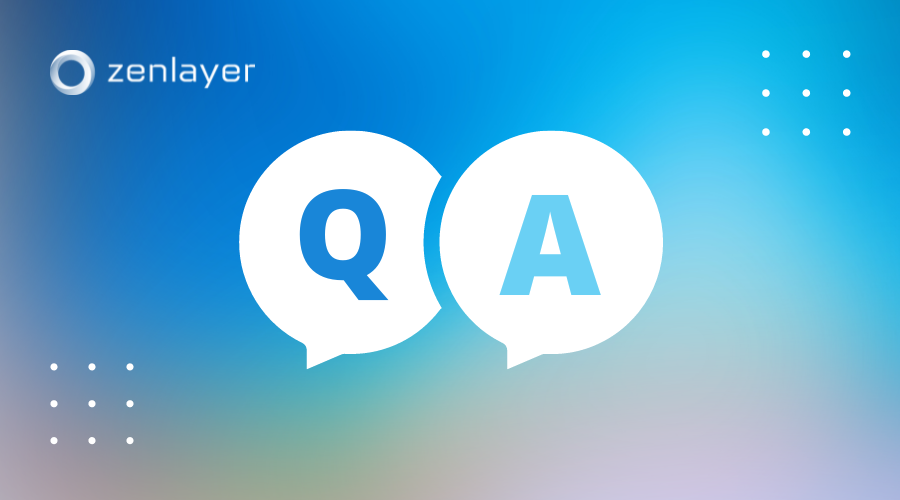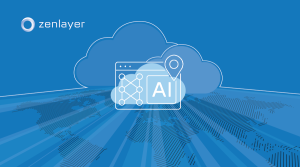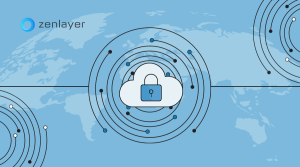Edge computing is one of the most exciting and impactful technologies in the media and entertainment industry today. But the edge is still a relatively new concept, and presently many companies are struggling to understand how to best integrate it with cloud services and content delivery networks (CDNs). Questions abound, like does edge computing replace the cloud? And are content delivery networks obsolete?
An in-depth discussion recently took center stage at the virtual Streaming Media Connect event, during the session titled “Overcoming Edge & CDN Infrastructure Challenges.” Zenlayer VP of Technology Alliance, Wade Chen, weighed in on edge computing along with experts from Disney Streaming, AWS, and Paramount.
The following is a snippet from the interview, featuring Wade and moderator Mark de Jong, who serves as CDN Alliance Chairman. You can watch the full video here.
Mark de Jong: Edge as we know is still a bit of a vague term. How does Zenlayer define the edge right now?
Wade Chen: At Zenlayer, we consider the edge as a datacenter edge. Typically, we define it as a city — or cities — within a specific region. In addition, we always look for a location that has an internet exchange (IX) or is a core network city where there is a lot of internet traffic exchange.
Zenlayer is also heavily focused in Southeast Asia, India, China, and other global emerging markets. We mainly focus on places that most hyperscalers and larger DC operators are not present.
MDJ: Can you tell us a few use cases on where you are or will be using edge for video workflows and content delivery?
WC: Through a streaming lens, video surveillance is a good use case. Companies can set up policies at the edge and only send back relevant data. In emerging markets, you don’t want to dump everything back to the origin because network transit can be expensive and there’s too much content. So, edge computing is very useful.
Another use case is net storage. You can set up multiple origins in different regions, to optimize latency and reduce network costs. We have seen cases where media customers use it for ingest points for moving data between regions quickly. It helps to have backend infrastructure in place so they are not dependent on public internet routes but instead, can leverage private backbones connectivity between regions. This allows for optimal routes and controlled latency for large workloads.
It’s also important to mention how the edge supports dynamic workloads. A lot of CDNs are good at pushing out content, but when you have a lot of users generating content or any dynamic data where you need to talk back and forth with the origin. When those nodes are closer to the end users, that helps a lot in increasing performance.
Gaming is also a big use case for edge, since companies today need low latency. Companies need to find places that are closer to their end users.
MDJ: The edge is already being used, but a lot of companies are still evaluating it. What are some things to think about beforehand?
WC: There are several important things to consider before getting started, such as the quality of the network at the edge, the demographic of clients you want to reach, international connectivity options, the application design, security needs, and so on.
All of these need to be looked at, and in many cases, you won’t know the answers until you deploy in region. So the ability to POC some of this is important. And this is where it helps to have a provider that has been there before and can walk you through the process. This can save considerable costs and time.
MDJ: Around 60% of all content providers rely on multi-CDN for delivery to get the best availability, scalability, performance, and cost-control. Multi-cloud is also getting more common. Is multi-edge something to be considered, and for what reasons? What is one of the biggest hurdles to be addressed to make multi-edge a reality?
WC: We try to give as much control, flexibility, and visibility to our clients. So even though we have around 300 PoPs (Points-of-Presence), customers also have bare metal cloud, and our full compute stack. And we’re very well peered. So wherever we are, our customers tend to be very close or even in the same data centers as our CDN PoPs. So as a multi-CDN, that works really well because there’s no latency and they don’t have to pay for that traffic because we peer with them and give them the best routes.
For us, one thing that we try to be careful about is maintaining redundancy across different regions and, and cities. Because when hosting critical infrastructure, you want to have some backup if a service fails. You must have something there to support the infrastructure or move it to somewhere else that still has decent latency. Since we provide custom solutions for many of our clients, we’re able to give them a lot more flexibility in terms of what they need, and allow them a single pane of glass across multiple emerging markets which reduces the hurdle of multiple systems and providers across Geo’s.
MDJ: Let’s talk about money. Edge is more costly in comparison to CDN and Cloud usage but also has its value. Can you tell us some use-cases or experiences where the business impact was positive with the use of edge and where it was not?
WC: You have to look at the TCO of delivery, as there are benefits and costs to both sides.
Let’s use a game company as an example that has a MMOG. They could use cloud to set up their main architecture develop the game and logins, use CDN to deliver the download files and updates, and use edge to set up ingest points or regional game servers to decrease latency.
By leveraging the right use case you’ll get better performance for your spend. If you use a single cloud instance, you’ll suffer from latency and low user base.
MDJ: Will edge replace cloud and/or CDN over time?
WC: It won’t. I think it’s like radio, TV, newspaper, and the internet. They all exist to transmit data. Even the traditional telephone line hasn’t been completely uprooted by mobile phones. They are good at different things. Also, edge is still a broad term. It could be IoT, 5G, mobile phone, desktop, and so on. Cloud and CDN aren’t going anywhere as they have different purposes. You can use everything in conjunction to optimize output depending on what stage you are in.
Want to learn more about how Zenlayer supports media & entertainment? Check out our ebook, The Edge Cloud and Media & Entertainment in Emerging Markets. You can also contact our team to schedule a free consultation.







